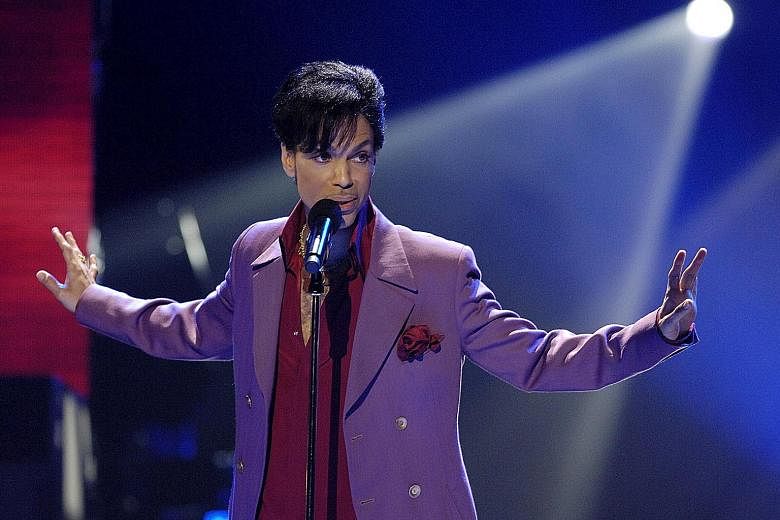MINNEAPOLIS • It is one of the great mysteries in recent American pop culture: the death of Prince almost one year ago and the circumstances that led him to be found crumpled on the floor of an elevator at his sprawling residence Paisley Park outside of Minneapolis.
How did he come into possession of the powerful opioid fentanyl, which killed him in an accidental overdose? Who, if anyone, bears some responsibility for his demise at 57?
To a surprising degree for a high-profile celebrity death, few answers have emerged for those questions.
This much is clear: Prince suffered from chronic hip pain, which may have set him on a course to find relief.
On April 21, days from the anniversary of his death, here is what is known based on an array of recent interviews:
Pharmacy records. Doctors he saw. Friends.
Investigators have checked those traps and no one has been arrested.
The investigation is being led by the Carver County Sheriff's Office, in conjunction with the Drug Enforcement Administration (DEA).
Mr Jason Kamerud, chief deputy for the sheriff's office, said the findings would eventually be passed on to the US attorney's office.
The sheriff's office has interviewed people who were at Paisley Park on the day Prince's body was discovered. As recently as February, the inquiry was active, according to a friend of Prince who was contacted at that time by a DEA investigator.
If Prince's fentanyl came from the black market - which appears clear because investigators do not seem to have turned up a prescription - tracing it will be difficult as there is no official paper trail.
Two doctors became figures in the drama. One was Dr Michael T. Schulenberg, who treated Prince before his death and arrived at the musician's house on the day he died with test results. Investigators questioned the doctor, who had prescribed an undisclosed medication to Prince.
The other was Dr Howard Kornfeld, a California opioid addiction specialist, who had been called in by a friend of Prince to treat the musician for his dependency.
Dr Kornfeld's son, Andrew, arrived at Paisley Park after Prince had died with a small dose of the drug suboxone, an anti-addiction agent, which he was not legally authorised to administer.
Dr Schulenberg, who left North Memorial Health Care after Prince's death, is now employed at another clinic. He has not said what medication he prescribed for the singer, but there has been no indication from investigators that it was an opiate.
A lawyer for Dr Howard Kornfeld, Mr William J. Mauzy, has said the doctor's son, Andrew, had been carrying the drug to give to a local doctor to administer.
Dr Kornfeld continues to run a treatment centre and his son is applying to medical schools. Dr Kornfeld said that he is glad Andrew had the presence of mind to be the one who called 911 that morning, though Prince had been dead for several hours.
In an article for CNN's website last year, Andrew wrote: "Believe me, nothing can prepare a person to walk into such chaos and sadness."
Prince's death was just one in a surging number of fatal overdoses from opioids, which were a factor in about 33,000 deaths nationwide in 2015, the last year for which the Centers for Disease Control has statistics. Overdoses of opioids have quadrupled since 1999.
Minnesota officials said fentanyl became pervasive on the local black market last year. Largely smuggled from laboratories in China and Mexico, it is as much as 50 times stronger than heroin. But it is cheaper to produce, so it is often disguised as more expensive prescription pain pills.
Since Prince's death, several regulatory changes have been approved, nationally, internationally and in his home state. The DEA, for example, decided in October to reduce by 25 per cent the amount of opioids that could be manufactured in the United States. In China, officials have agreed to ban the production of four types of fentanyl.
The broadest national response was passage of the Comprehensive Addiction And Recovery Act last summer, which authorised US$181 million (S$254 million) in spending to address the opioid epidemic.
The Prince estate, which could be worth up to US$300 million, still has major issues to resolve and large tax payments to make after a year. Judge Kevin W. Eide has settled on six of Prince's siblings and half-siblings as his likely heirs. He rejected claims from others.
The estate includes US$25 million in real estate holdings and, among other liquid assets, 67 gold bars. The value of Prince's greatest asset - his vast music catalogue - is still undetermined, although the estate has struck multi-million-dollar deals to exploit it well into the future. The first big move, in February, was the return of Prince's most popular songs to streaming services.
Those deals were made under the supervision of Bremer Trust. On Feb 1, however, Comerica Bank & Trust took over as administrator and the judge rejected efforts by two high-profile lawyers - Mr L. Londell McMillan, who once represented Prince, and Van Jones, the CNN political commentator - to become personal representatives, a position similar to executor.
Mr Eide cited bitter disagreement about the qualifications of Mr McMillan and Jones by the six presumptive heirs, who have split into two camps, four favouring Mr McMillan and two favouring Jones.
NYTIMES

